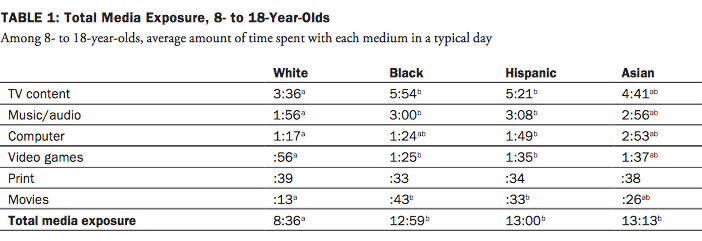Students and Media Consumption
Stats can be overwhelming but this one should pinpoint how big the population of Latino youth is: In the United States, there are 1,543 high school and 1,429 middle schools with a 40 percent+ Latino population. The 1,543 high schools alone account for more than 1.5 million Latino kids. If that doesn’t get your creative senses tingling to reach this lucrative market, then get them into gear!
Why are they special?
If their sheer numbers don’t make them special, this informative description by mediapost of what NGL’s are should: A lot of marketers have taken to a new moniker for this rising demographic - "New General Latinos" or NGLs. NGLs are a different animal. They're all about lifestyle activators - music, food, entertainment, literature and travel - more so than education, hard work and the "American Dream." They are extroverted, outgoing, outspoken and, above all, wired. They are defined by culture, not exclusively by language - at least not the Spanish language. They have tremendous Latin pride, and social networking is a starting point for their large web of social interactions.
Not Beyond Reach
Looking at the quick tips graphic and the definition of NGLs, it’s obvious that although Spanish is spoken, most media by Hispanic youth is consumed in English and social networking is prevalent in their daily activities. According to mediapost.com the three top media consumed by Hispanic youth are:
1. The Internet, 2. Television, and 3. Radio.
1. The Internet, 2. Television, and 3. Radio.
 | |||||||
| newstaco.com |
 |
| blogs.law.harvard.edu |
A presentation about Hispanic youth marketing states that younger Hispanic internet users (ages 12-34) spent more time online per week than they did watching television. With these starting points in mind, the best way to reach out while building your foundation is to not start with big Spanish TV networks. You aren’t trying to reach their parents who rely on newspapers, magazines, or Univision for news. You’re trying to reach a new demographic of Hispanics that spend most of their time on the internet with television following close behind.
Build your foundation by using multiple platforms and utilize social media and music (these are key entry points). Test emerging media—what do you think is an up and coming? For example, not too long ago, Pinterest was a lesser known social media platform. Go ahead and start using those sites that have a small following because before you know it, it’ll be the next big thing.
Case Study
In the same presentation, a great case study was highlighted: The U.S. Army for example created awareness, increased propensity, and ultimately drove quality leads among Hispanic prospects to the U.S. Army, Army Reserves, and ROTC. With a target demographic of 18-24 year old Hispanics in the U.S. and Puerto Rico the U.S. Army utilized social media and general internet sites that had a high amount of traffic. In doing so, the U.S. Army became part of their social world and leveraged mobile phones with apps and advertisements. Through this type of outreach, the U.S. Army is able to successfully reach their target demographic but the key to their success is based on proactivity. Being active on the social media front will help your efforts and help others see your day to day changes and successes.
Overall
Where you spend your personal time on a daily basis i.e. Facebook and Twitter, are places Hispanic youth are most likely frequenting. Use these digital platforms to drive efforts and carefully select traditional media with your target in mind. Have differentiating insights to drive communications and keep learning by continually testing the youth market.
What success have you had in reaching Hispanic youth?
Sources:
Mediapost.com
Mediapost.com
No comments:
Post a Comment